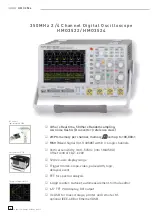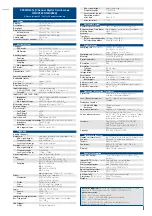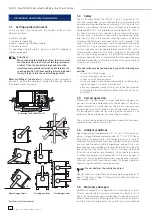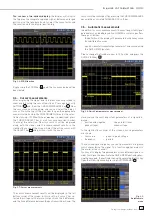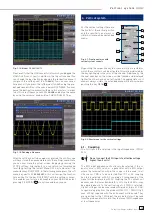
6
Subject to change without notice
I n s t a l l a t i o n a n d s a f e t y i n s t r u c t i o n s
1 Installation and safety instructions
1.1. Setting up the instrument
As can be seen from the fi gures, the handle can be set into
different positions:
A and B = carrying
C = horizontal operating
D and E = operating at different angles
F = handle removal
G = operating using the feet‘s, batch use and for shipping in
original packaging
STOP
Attention!
When changing the handle position, the instrument
must be placed so that it cannot fall (e.g. placed on
a table). Then the handle locking knobs must be
simultaneously pulled outwards and rotated to the
required position. Without pulling the locking knobs
they will latch in into the next locking position.
Removal/fi tting of the handle:
The handle can be removed in
position F, pulling the side parts outside the housing. Adding
the handle works vice versa.
1.2. Safety
The instrument fulfi ls the VDE 0411 part 1 regulations for
electrical measuring, control and laboratory instruments and
was manufactured and tested accordingly. It left the factory in
perfect safe condition. Hence it also corresponds to European
Standard EN 61010-1 and International Standard IEC 1010-1.
In order to maintain this condition and to ensure safe opera-
tion the user is required to observe the warnings and other
directions for use in this manual. Housing, chassis as well as
all measuring terminals are connected to safety ground of the
mains. All accessible metal parts were tested against the mains
with 2200 V
DC
. The instrument conforms to safety class I. The
oscilloscope may only be operated from mains outlets with a
safety ground connector. The mains plug has to be installed
prior to connecting any signals. It is prohibited to separate the
safety ground connection. If suspected that safe operation may
not be guaranteed do not use the instrument any more and lock
it away in a secure place.
Safe operation may be endangered if any of the following was
noticed:
– in case of visible damage.
– in case loose parts were noticed
– if it does not function any more.
– after prolonged storage under unfavourable conditions (e.g.
like in the open or in moist atmosphere).
– after any improper transport (e.g. insuffi cient packing not
conforming to the minimum standards of post, rail or trans-
port fi rm)
1.3. Correct
operation
Please note: This instrument is only destined for use by person-
nel well instructed and familiar with the dangers of electrical
measurements. For safety reasons the oscilloscope may only
be operated from mains outlets with safety ground connector.
It is prohibited to separate the safety ground connection. The
plug must be inserted prior to connecting any signals.
The oscilloscope is destined for operation in industrial, business,
manufacturing, and domestic sites.
1.4. Ambient
conditions
Operating ambient temperature: +5 °C to +40 °C. During trans-
port or storage the temperature may be –20 °C to +70°C. Please
note that after exposure to such temperatures or in case of
condensation, proper time must be allowed until the instrument
has reached the permissible temperature, and until the con-
densation has evaporated before it may be turned on! Ordinarily
this will be the case after 2 hours. The oscilloscope is destined
for use in clean and dry environments. Do not operate in dusty
or chemically aggressive atmosphere or if there is danger of
explosion. The any operating position may be used, however,
suffi cient ventilation must be ensured. Prolonged operation
requires the horizontal or inclined position.
STOP
Do not obstruct the ventilation holes!
Specifi cations are valid after a 30 minute warm-up period at 23
degr. C (tolerance ±2 degr. C). Specifi cations without tolerances
are average values.
1.5. Warranty
and
repair
HAMEG instruments are subjected to a strict quality control.
Prior to leaving the factory, each instrument is burnt in for 10
hours. By intermittent operation during this period almost all
defects are detected. Following the burn in, each instrument is
tested for function and quality, the specifi cations are checked
Carrying positions
Operating positions
Removing the handle (Pos. F)
Stacking positions
E
D
C
A
B
A
B
C
D
E
F
G
Positions of the instrument
G




